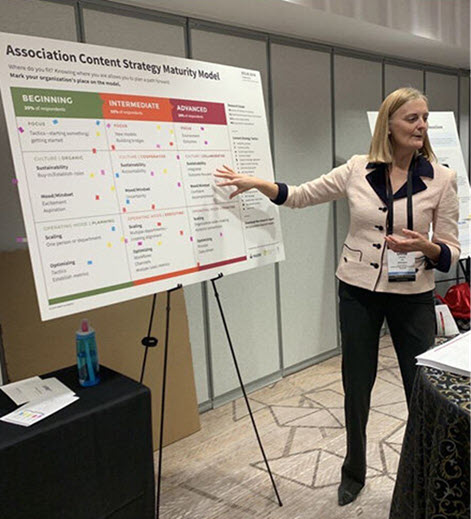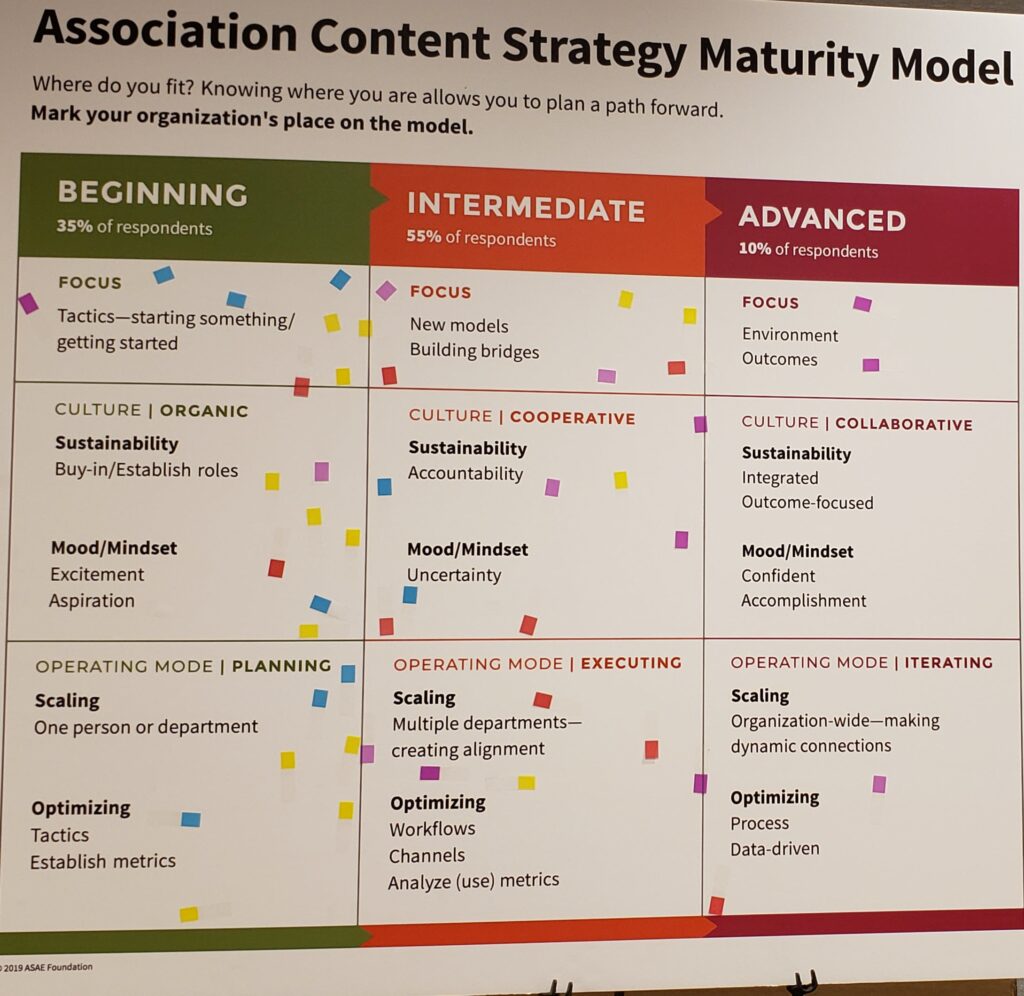Originally published on Content Forum, the content strategy community for associations and nonprofits.

I want to share some examples that I have used recently to help organizations start changing the way they think about their content strategy and process.
I created a few worksheets and example results reports based on the content strategy maturity model published in the ASAE Foundation study, Association Content Strategies for a Changing World.
While I created these for consulting workshops, I am including excerpts and a brief “how-to” here in the hopes that you will be able to use them in your organization to jump start or continue your content strategy journey.
Take a look at the process and examples, let me know what you think, and tell me how it works for you.
- Tactics Worksheet: Using the definitions from the study along with some real-world examples to explain tactics that your team may not be as familiar with, ask your team to individually complete the worksheet to identify which tactics are used for all organizational content, for some organizational content, or not at all.
- Tip: During the discussion of everyone’s results, capture which tactics are being used by which content owners or departments. This will help you make suggestions later for future collaboration or idea-sharing.
- Tactics Results Report: This report captures the results of which tactics are being used by which groups. It provides a baseline for where your organization is now. You can brainstorm ideas and make recommendations for how teams can build off successes and use tactics more pervasively across the organization. In my conversations with core project teams, they focused on where they thought they could get quick wins. For example, if the Research department was successful using journey mapping for their microsite redesign, someone from that team would work with the Conference team to re-think their annual meeting site.
Where Are We on the Content Strategy Maturity Model? Walk your team through the explanation of the Beginning, Intermediate, and Advanced stages of the Focus, Culture, and Operations areas of the model. Give everyone three small dots or sticky notes and ask them to place the dots on the model.

In the photo to the right, you can see that some people chose to place their sticky at one side of the Culture box; others placed theirs closer to the Beginning/Intermediate side of the box.

- Discuss the results with the group to understand why individuals chose different phases of maturity. Capture these thoughts for your report.
- Tip: If you don’t have a fancy poster version of the maturity model, sketch boxes on a flipchart that looks something like the photo to the left.
Recommendations Report: As with the Tactics Results Report, the Recommendations report should document where the organization currently stands. You also want to describe both the opportunities for and barriers to progress that were discussed during the dot exercise.
Whether you are creating recommendations for yourself or making a pitch to your boss or the leadership team, it is a good idea to think practically about potential next steps and who can lead them. Set deadlines or milestones for the tasks that help move the organization along the maturity model.
- Tip: If someone expressed a lot of interest during the discussion of content operations, for example, reach out to them to see if they would be willing to re-think a new process. The more content strategy advocates you can get on board, the better.
